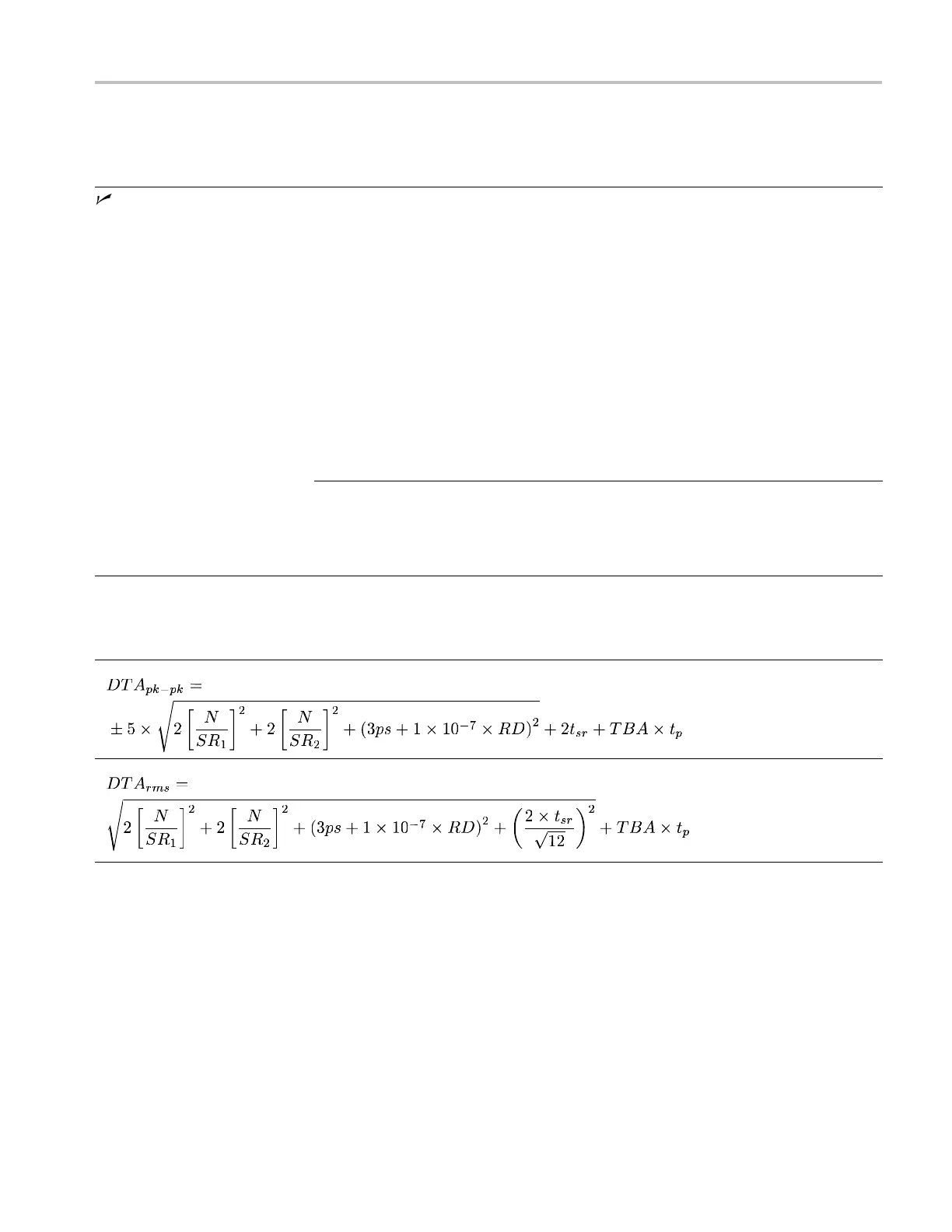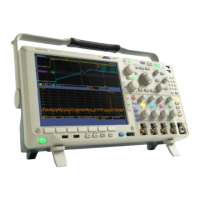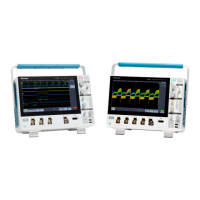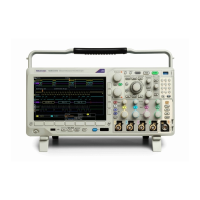Specifications
Table 2: Time base system specifications (cont.)
Characteristic Description
The formula to calculate the delta-time measurement accuracy (DTA) for a given instrument
setting and input signal is given in the following table. (See Table 3.) The formula assumes
insignificant signal content above Nyquist and insignificant error due to aliasing. The
abbreviations used in the formula are as follows:
SR
1
= slew rate around 1st point in measurement (1
st
edge)
SR
2
= slew rate a round 2nd point in measurement (2
nd
edge)
N =input-referred noise (V
RMS
)(RefertoRandom Noise and Sample Acquisition Mode
specifications.)
TBA = time base accuracy (5 ppm) (Refer to Long-term Sample Rate and D e lay Time Accuracy
specifications.)
t
p
= delta-time measurement duration (sec)
RD = (record length)/(sample rate)
t
sr
= 1/(sample rate)
assume edge shape that results from Gaussian filter response
Delta-time m
easurement
accuracy
The term under the squareroot sign is the stability and is due to TIE (Time Interval Error). The
errors due to this term occur throughout a single-shot measurement. The second term is due
to both the absolute center-frequency accuracy and the center-frequency stability of the time
base and varies between multiple single-shot measurements over the observation interval (the
amount of time from the first single-shot measurement to the final single-shot measurement).
Table
3: Delta-Time measurement accuracy formula
The terms used in these formulas are defined under Delta-time measurement accuracy, in the preceding table. (See Table 2.)
MDO4000 Series Specifications and Performance Verification 9

